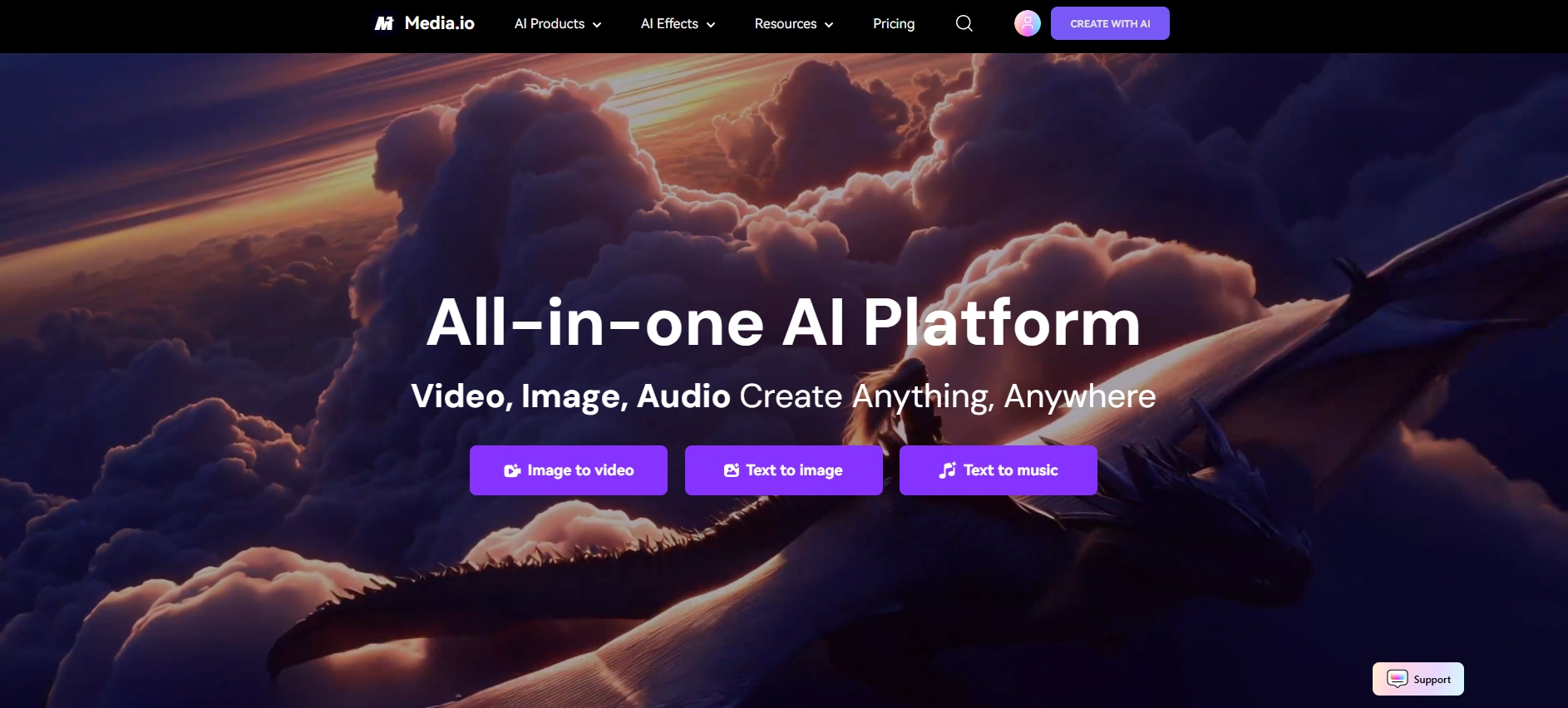: $3.99/month
Moises pro: $29.99/month
Part 2. AI Instrumental Music Creators (Prompt-Based Music Generation)
If you want to create an original or clean instrumental, rather than just a karaoke-style track stripped of vocals, these AI instrumental music creators can be handy. There are many tools available, but the following are the best:
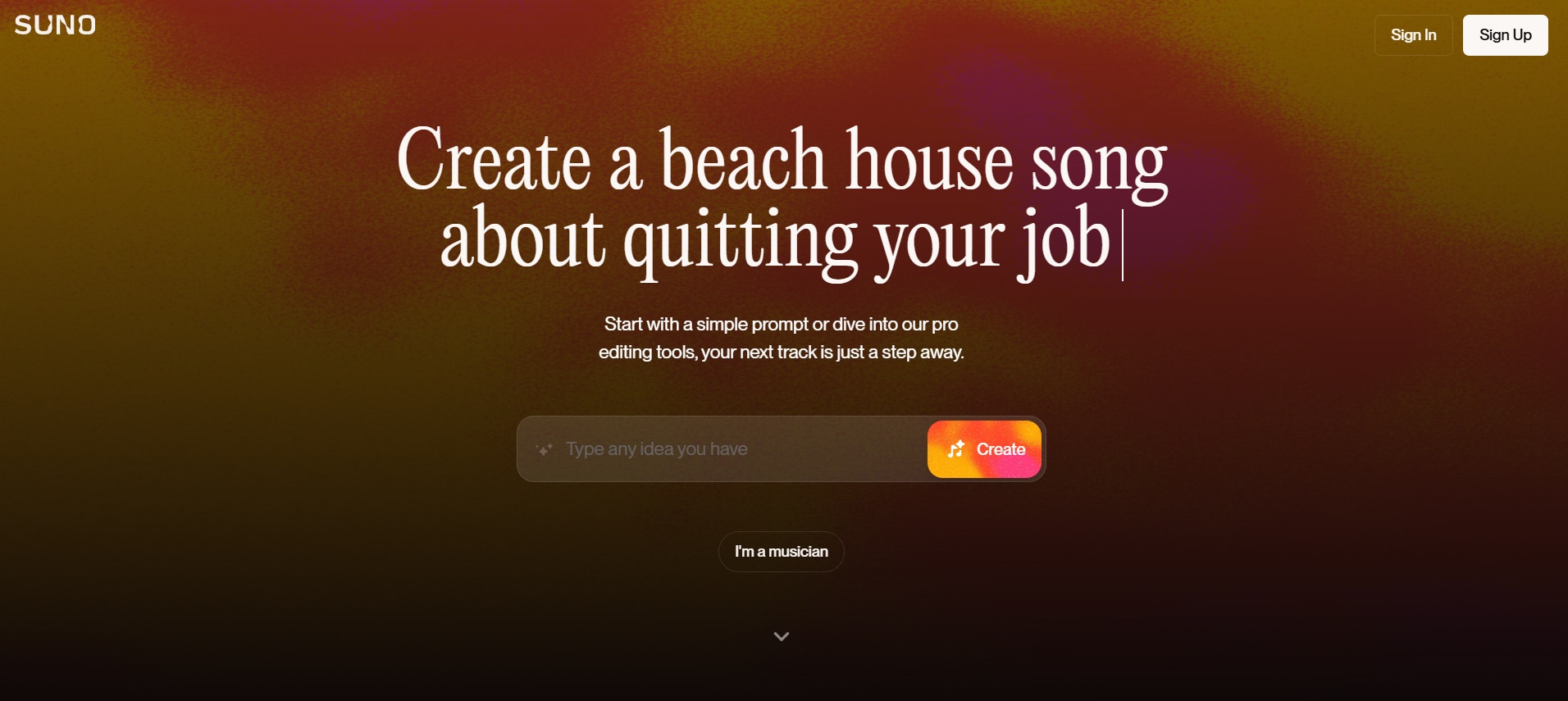
Suno AI is a music generation app, rather than just being an AI instrumental maker. The interface is straightforward, as you can generate songs by typing in the lyrics and selecting a style. The tool is fast to process and create a pair of two-minute songs. With instrumentals, just type in something like “lo-fi chill vibe” and it generates an output within seconds. It features a separate web app that performs genre fusion, so you can hear how unrelated styles sound when bundled together.
Key Features
- Suno AI can create songs with vocals and instrumentation, based on the user-provided text prompts.
- The tool is capable of blending genres to explore unconventional styles.
- It has a stem splitting tool that separates bass and drums from the rest of your instruments.
- You can make edits, add effects, and sample the song directly in the programme.
Pricing
- Pro: $8.00/month
- Premier: $24.00/month
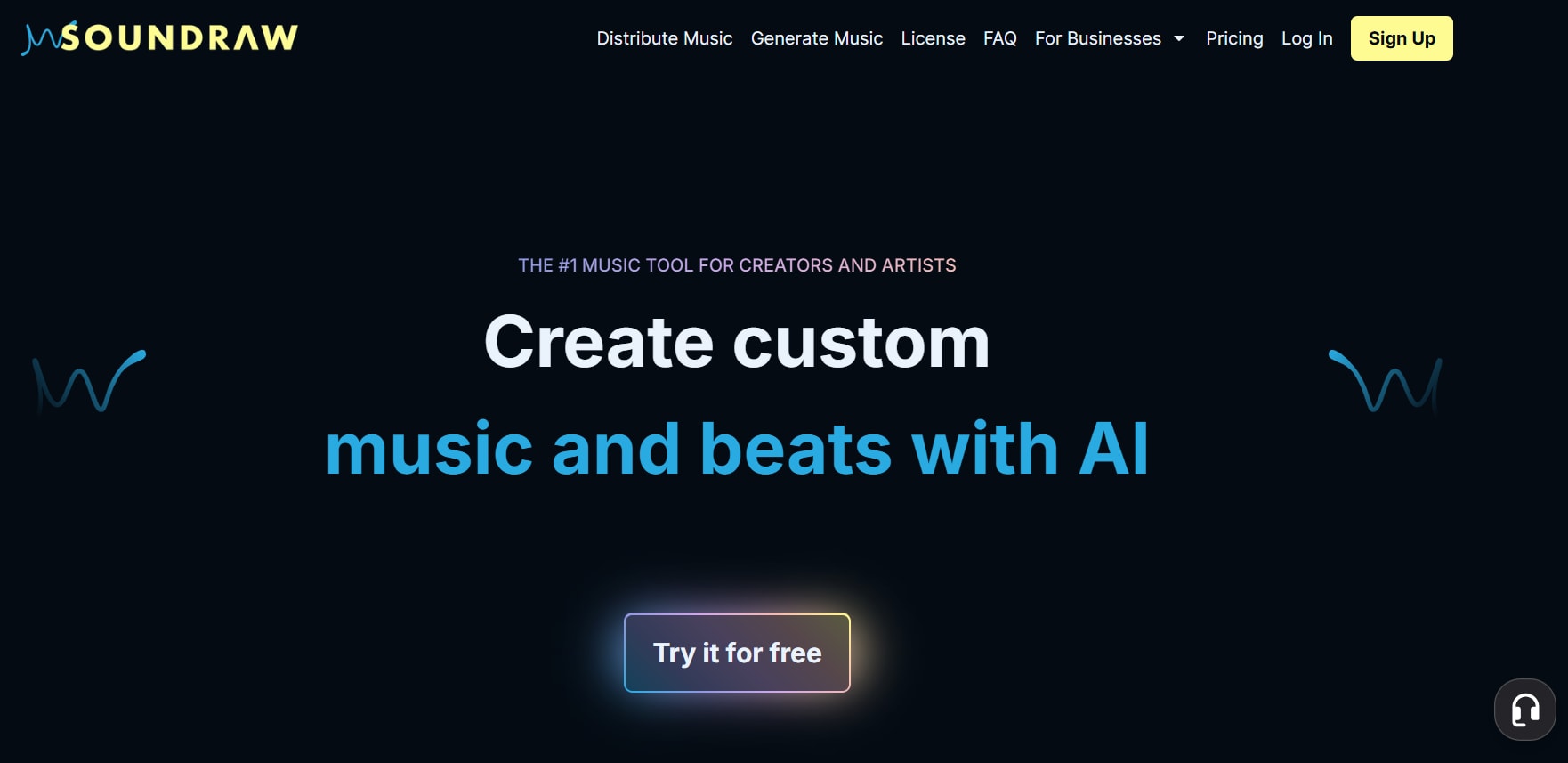
Soundraw is a beginner-friendly website that lets you generate music and instrumentals using Artificial Intelligence (AI). Just tell AI what you need, and it creates it within seconds. What’s unique about the tool is that it puts you in charge. You can change the instruments, mood, and even the song’s length. Also, you can select music from Soundraw’s extensive music library and add it to the instrumental.
Key Features
- It generates royalty-free instrumentals to use in your songs and podcasts.
- It has editing tools that let you customize the output.
- Its music library is vast, so you’ll get instrumentals and music of different styles.
- The tool lets you share your music with team members and collaborate with them on the platform.
Pricing
- Free Trial
- Creator: $11.04/month
- Artist Starter: $19.49/month
- Artist Pro: $23.29/month
- Artist Unlimited: $32.29/month
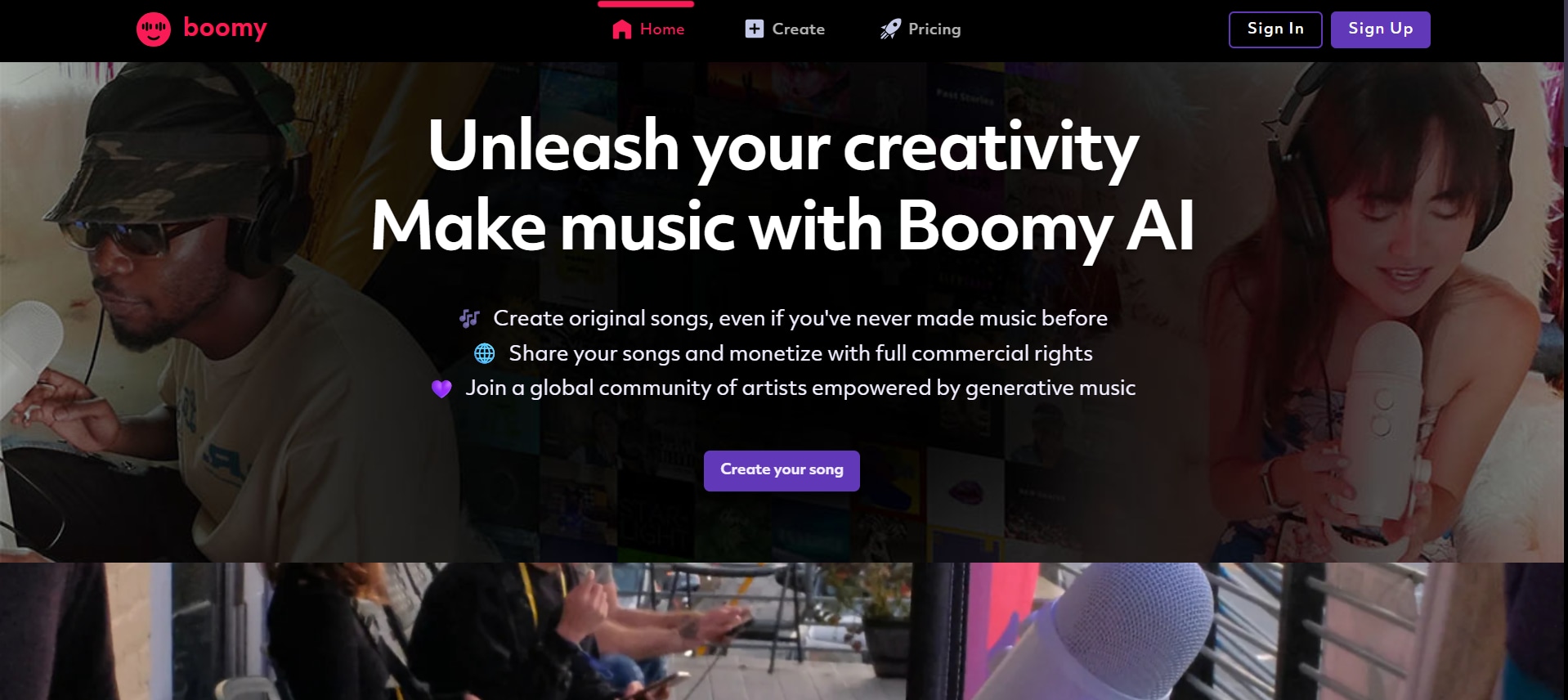
If you’re someone with not so much talent but aspire to create music, Boomy is worth giving a shot. This AI instrumental generator is easy to use, and music creation takes a few seconds. Just select the genre, write a prompt to guide the AI, and let it do its magic. You can experiment with different genres, such as ambient, lo-fi, and EDM, without prior knowledge and tweak elements like melodies and effects to add personalization.
What’s unique is that you can submit your creations on platforms like Spotify and collect royalties. It’s good to start, but you can’t expect to create chart-topping hits right away.
Key Features
- Select from various instrumental music styles, including electronic dance, rap beats, lo-fi, and more.
- It integrates with streaming services to provide users with a potential source of income.
- The tool lets you connect with creators worldwide, access support resources, and collaborate through Discord.
- It offers tools to adjust tempo, key instruments, and track structure.
Pricing
- Creator: $9.99/month
- Pro: $29.99/month

Mubert AI is currently the most talked-about text-to-music solution among beginners and professionals. The reasons are its intuitive interface, plenty of musical customizations, and over 100 genres. With simple text prompts, you can create instrumentals based on genre, mood, key, or beat per minute. Similar to Boomy, it enables you to make music collaboratively with AI, share it on streaming platforms, and earn money.
Key Features
- The popular AI instrumental generator creates music with simple text prompts.
- You can integrate Mubert with Adobe Premiere or Adobe After Effects installations and edit the music.
- Create and share your music to earn while it’s shared with global audiences.
- Choose from over 100 genres and a range of attributes to find inspiration for your music.
Pricing
- Ambassador: Free
- Creator: $11.69/month
- Pro: $32.49/month
- Business: $149.29/month
Part 3. Traditional Instrumental Music Makers (Manual or Semi-AI DAWs)
AI tools make your life simpler by allowing you to create music with just a few clicks. You can use it to create music and use it in your projects. However, with fewer customizations, these might be restrictive for the professionals. If you’re one of those who need a good and traditional instrumental music maker for your projects, these are the best:
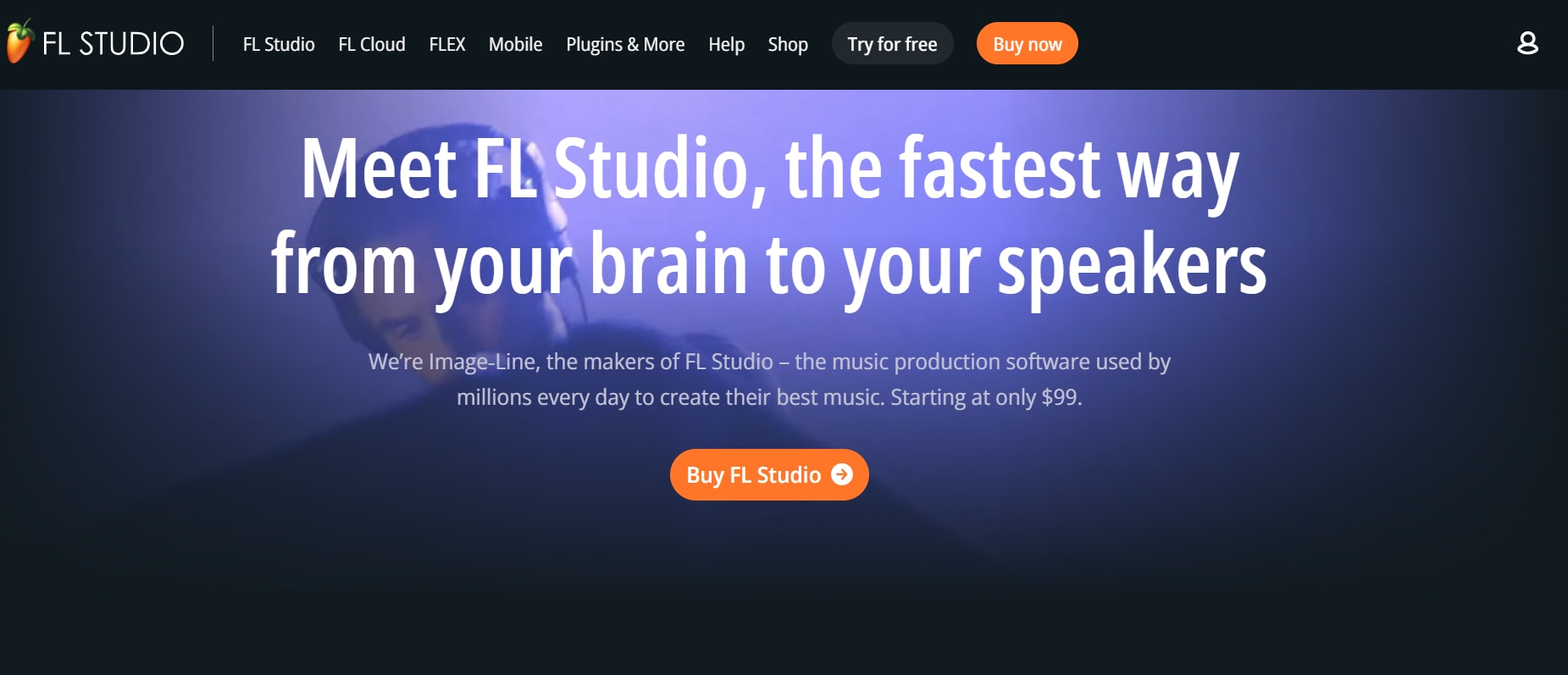
FL Studio, previously known as FruityLoops, has evolved into a powerful Digital Audio Workstation (DAW) since its launch. As it’s a manual music maker, it takes some time to get accustomed to the interface. However, despite its complexity, the UI is well-drawn and easy to read. You can record the music, play around with the notes, and create and develop individual patterns. Besides, you can combine clips, add elastic fades, automated crossfades, and much more to create good instrumental music.
Key Features
- Its step sequencer is a grid-based tool usable for creating drum patterns and melodies with precise timing.
- There’s a visual interface for composing and editing melodies with precision.
- A set of controls is available for adjusting panning, volume, and adding effects to individual tracks.
- There’s a vast library of instruments, effects, and other plugins.
Pricing
- Fruity: $99.00
- Producer: $179.00
- Signature: $269.00
- All Plugins Edition: $449.00
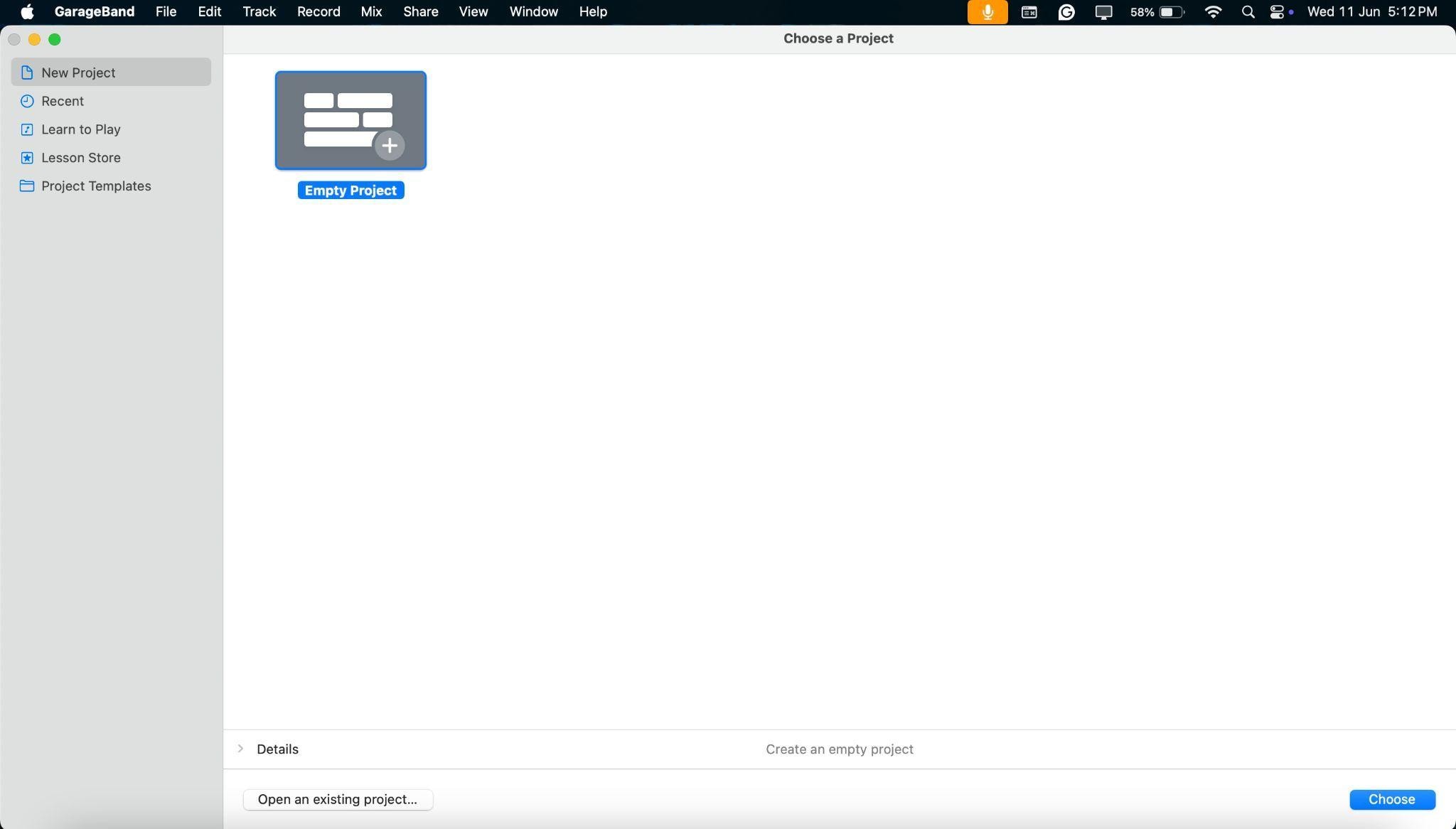
If you’re learning to make music, you can start with GarageBand, a digital audio workstation (DAW). It comes built-in with every Apple computer and offers a vast array of instruments, as well as powerful mixing and mastering features. The interface makes the editing comparatively simpler than FL Studio, and you can easily record and mix multiple tracks (up to 255). What’s unique about the DAW is that it works with the Logic Remote app available on iOS devices. You can use your iPhone or iPad to play any GarageBand instrument on your Mac wirelessly.
Key Features
- It offers a vast selection of virtual instruments, including a realistic keyboard, guitar, bass, and drums.
- You can record and edit performances, adjust tempo, and fine-tune the sound.
- The tool includes a range of instrument synths, presets, loops, and other inspirational sounds.
- Various pre-recorded lessons for piano and guitar are also available to learn.
Pricing

BandLab is one of the few reliable browser-based digital audio workstations (DAWs) designed for music creation and collaboration. This free instrumental music maker is a good option for beginners and those who want to collaborate with others, with features like cross-device compatibility and cloud storage. The interface is simple and offers a range of visual instruments, including piano, bass, and drums, as well as various effects. Although its mastering features aren’t as extensive as the likes of FL Studio, you can certainly use the available ones to polish your tracks.
Key Features
- You can create and share an unlimited number of instrumentals and other music projects.
- The tool allows real-time collaboration on projects with multiple users.
- There are over 10,000 royalty-free samples and more than 200 MIDI-compatible virtual instruments.
- You have access to a range of effects and presets to customize the audio.
Pricing
- Monthly: $14.95/month
- Annually: $99/year
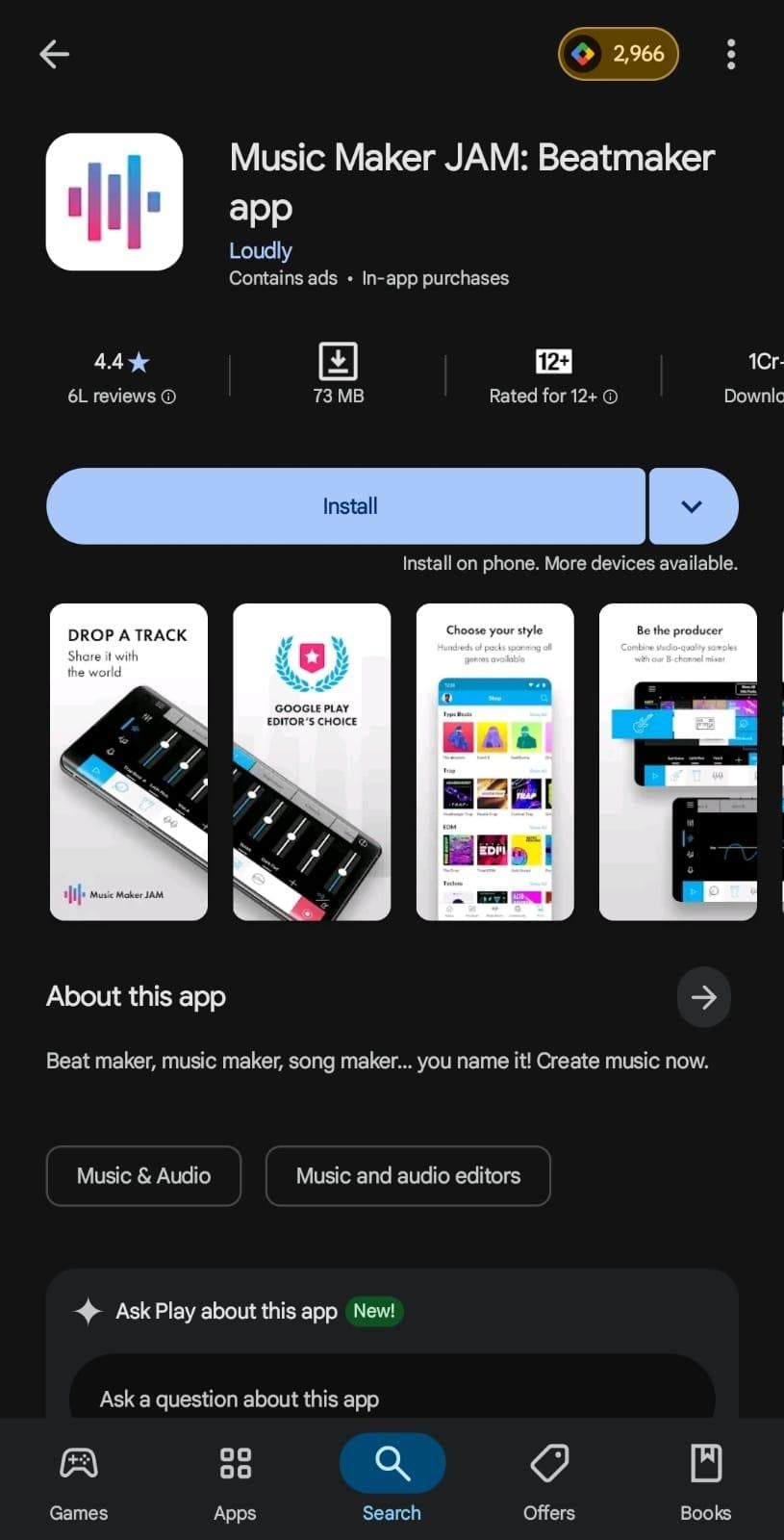
If you want professional instrumental music maker for your Android and iOS devices, Music Maker JAM can be a good pick. It entails a wide range of samples across multiple genres, including EDM, Trap, Hip-Hop, and more. You can also record, add vocals, apply effects, adjust harmonies, and share it with others. All of it is packed into a user-friendly interface that makes it accessible to both beginners and experienced producers.
Key Features
- Music Maker JAM provides access to a range of samples and loops across various genres and moods.
- You can remix an existing track or create an original composition.
- Its 8-channel mixer allows you to fine-tune your track by adjusting effects, volume, and overall mix.
- You can apply a range of effects, such as stutter, reverb, and delay, to add creative sonic elements.
Pricing
Part 4. When to Use an Instrumental Generator vs a Vocal Remover
| Use Case |
Tool Recommendation |
| You want original music |
FL Studio, GarageBand |
| You already have a song |
Wondershare UniConverter, Media.io |
| For YouTube use |
Lalal.AI, Suno AI, Boomy |
| You want stem control |
FL Studio |
| You want to upload music to Spotify |
Boomy, Mubert AI |
| You want to make instrumental music on the go |
Music Maker JAM |
| You want professional controls |
GarageBand, FL Studio |
Conclusion
Instrumental song makers are primarily of three types, and the suitability of each depends on your needs and skills. For example, if you want to create one from scratch, you can use either AI text-to-audio tools or traditional tools like FL Studio, BandLab, or Music Maker JAM. At the same time, if you have a song, Wondershare UniConverter is one of the best tools for removing vocals from a song and producing a clear instrumental. Whether you want to remix songs, make background tracks, or compose original music, there’s a tool for every use case.
FAQs about Instrumental Maker
-
What’s the best free instrumental music maker?
The best instrumental music maker depends on your needs and how yos_y6}">Enjoyther ch, you canong and ;:24,"y":13286,"w":938,"h":54,"1,&qu/h5>
The best instrumental music maker depends on your needs and how yos_3ot;abfrom scrat":1uot;abst;:1op827}">;:18,"a:13304,"w":898,"h":18,"abs_x":691,"abs_y":13615}"1,&6{"x":8,uot;:635,"abs_y":14168}">
There are a few technical go377rsh with the tool.
Pricing
Part 4. When to Use an Instrumental Generator vs a Vocal Remover
FAQs about Instr44entaF"y":1":1,":24,"y":13286,"w":938,"h":54,"1,15
The best instrumental music maker depends on your needs and how yos466}">Only":604,&quMaccommendation
You want professional controls
04,"h":21,"abs_x":635,"absrumeol for every use case.
GarageBand, FL Stu6path>3uot;h":21,"abou w;:6ition.
- FL Studio
Boomy, Mubert AI
;:135,&qf062}"t;:1/lii:604,browser stroke,"abs_y":13827}">Tool R fil_si;:11o height=size="{&q;y":10935t;w& This6,"w":930,"h":
Yo"{"x&ws://uot;yt;:10935,&uot;y tools,"w&69}">Frlike 2.585-"13640,tquot;h&q;y&quloud>
{"x":3uot;x&quoquot;abs_y&quorom scrategend>
<,&qainly&bs_xot;yquot;:604,&qot;:970olishot;x&qtforward,ot;:13661,"w":338,"h":21,&quo18inners and experienced producers.GarageBand, FL St221o |
uot;y&quo like FL Studio, BandLab, or Music Maker JAM. At the 19erter, Media.io
Conclusion
| Make Instrumental Now Make Instrumental Now
|
